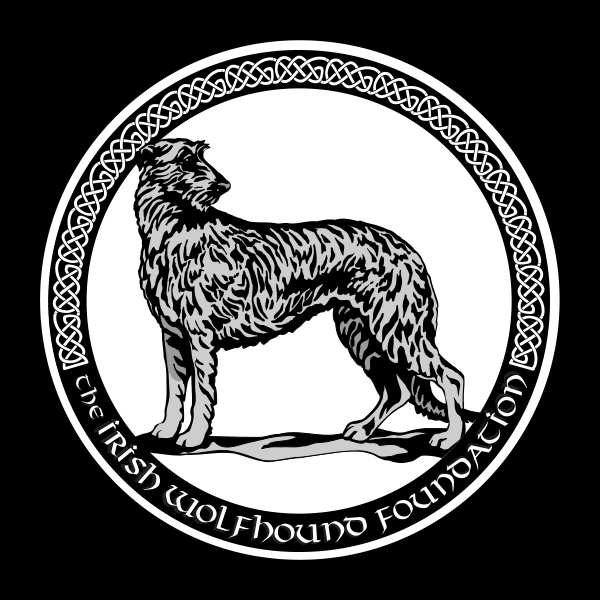Dive At Your Own Risk!
Some breeders of Irish Wolfhounds, in the attempt to improve longevity and reduce the incidence of hereditary health problems, seek to breed apparently unrelated individuals in hopes of “breeding away from” problems. Some of these breeders rely heavily on computed coefficients of inbreeding. An inbreeding coefficient is a mathematical computation showing the number of common ancestors in the background of a given animal. The lower the number; the fewer the common ancestors and, thus in theory, less chance of producing defects. Although this approach would initially seem sensible, its ability to totally eliminate genetic problems is limited by two factors: the small size of the Irish Wolfhound gene pool, and the pervasive nature of certain genetic health issues.
No matter what you do, you can’t make the Irish Wolfhound gene pool bigger. It is small. Period. Although the Irish Wolfhound is an ancient breed, its reconstruction is relatively recent, and it involved a small number of animals. As late as the early 1900s, outcross breedings have appeared in IW pedigrees. Felixstowe Bob (Great Dane) x Felixstowe Lufra (Scottish Deerhound) produced Felixstowe Sheelagh, who appears in many modern pedigrees. Also, there were two bottlenecks: the first during World War I, and another during World War II, when very few breedings occurred. As recently as the 1990’s, the gene pool was further limited by the use of several popular sires, each of whom sired 30 to 40 litters. In addition, a few health scares have further reduced the gene pool by removing animals that were known or suspected carriers of those conditions. These factors in combination mean that we have had a small isolated population for about 25 generations. The number of possible genetic combinations is limited solely by mathematics. So, how does this actually look on paper, and what does it mean?
Let’s look at two examples, both of which have the Felxstowe outcross mentioned above in the pedigree. The first example is a bitch whelped in September of 2005, that we will call “Yearling.” “Yearling” was produced by a loose inbreeding (linebreeding). The second breeding example is a “what if” breeding planned for 2007 that we will call “Wishful Thinking.” This potential breeding is what some would call an outcross.
Yearling has a pedigree with 30 generations, but has only 18 complete IW generations because Felixstowe Bob and Felixstowe Lufra appear in generation 19. In an 18 generation pedigree, there are 524,286 positions. For “Yearling,” of the 524,286 positions, there are only 854 unique individuals. The inbreeding coefficient at 6 generations is 8.72 and at 10 generations it is 18.16 for this IW. The average inbreeding coefficient at 10 generations for Irish Wolfhounds is about 15. The breeding was done to establish the type that the breeder wants. The breeding of “Yearling” will more than likely accomplish the goal set by her breeder.
For “Wishful Thinking,” the inbreeding coefficient at 6 generations is 0.00, and for 10 generations it is 6.15. Since both of these figures are lower than the corresponding ones for “Yearling,” this looks like an outcross— but it really isn’t that far from the last bottleneck. For “Wishful Thinking’s” pedigree, there are 2,046 positions, but only 709 unique individuals at 10 generations. At 16 generations there are only 1396 unique individuals in 131,070 pedigree positions. “Wishful Thinking’s” breeding was proposed to increase longevity and to decrease fatal diseases (such as cardiomyopathy and osteosarcoma) by the sole use of an outcross (low inbreeding coefficient). However, “Wishful Thinking’s” proposed breeding is just that – wishful thinking! Even though “Wishful Thinking” has more unique ancestors than “Yearling,” there is still a strikingly limited number of unique animals in the pedigree. The bottom line is that the number of genes in the gene pool has already been established, and this fact limits just how distant two Irish Wolfhounds can be from each other. All wolfhounds are related or they would not be wolfhounds. Therefore, what may at first glance appear to be an outcross is in reality more of a very loose inbreeding.
Some of the genetic diseases that affect wolfhounds — epilepsy, liver shunt, PRA, and PCD — appear in highly increased numbers in some families. This suggests a gene (or genes) specific to only animals descended from a certain individual or individuals who are carriers. Heart disease and osteosarcoma, on the other hand, show up throughout the breed, rather than in small clusters, indicating that these problems are pervasive rather than isolated. At the present time, at least, outcrossing will be ineffective at totally “breeding out” these diseases without making the gene pool even smaller and thereby also threatening type. The hereditary aspects are in the gene pool to stay.
Having said that, there are some things that breeders can and should do. A breeder can research the age of onset of these diseases in the bloodlines of prospective mates. There are different types of both cardiomyopathy and osteosarcoma, and the breeder can opt to use pedigrees that show animals with the latest-onset or most treatable forms of these diseases. For instance, some types of cardiac disease occur relatively late in life, respond to treatment, and progress slowly, while others occur much earlier and progress to fatality very quickly. Similar variation has been observed for osteosarcoma, though it remains a terminal diagnosis in the Irish Wolfhound. Lastly, regular testing needs to be done not only for the health of your kennel and of our breed, but for the sake of the individual hound. Problems like atrial fibrillation are nearly always a surprise diagnosis, and early treatment can positively impact the course of this disease and the comfort of your hound.
Selecting a proper mating is undeniably the ultimate challenge each breeder faces. But the Irish Wolfhound is worth it.


